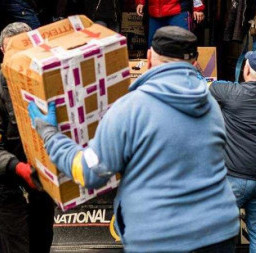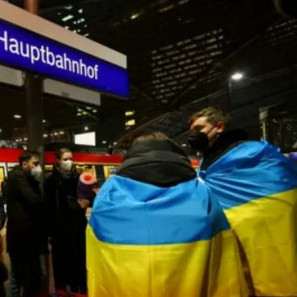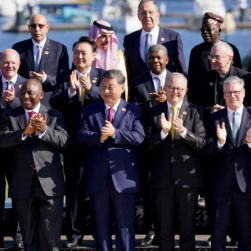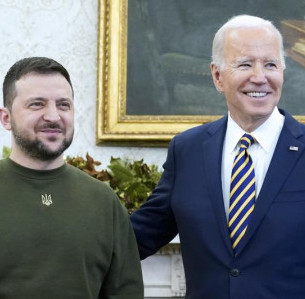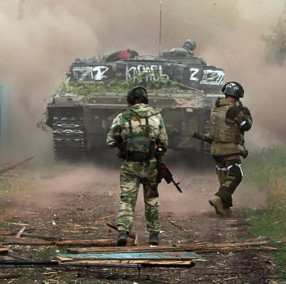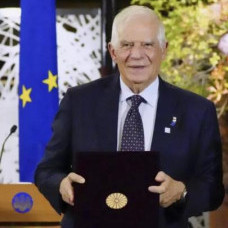"Have we approached US borders? Or the borders of Britain or any other country? It is you who have come to our border, and now you say that Ukraine will become a member of NATO as well. And you are demanding guarantees from me. It is you who must give us guarantees, and you must do it immediately, right now!" Putin said during his annual press conference held on December 23 in Moscow. Yes, missiles oncoming to Russian borders have always been a hypersensitive issue to Moscow and resulted in particularly dangerous crises.
In 1961, the United States deployed medium-range PGM-19 Jupiter missiles in Italy and Turkey. Having a range of about 3,000 km, they could reach the USSR, including Moscow, intercontinental ballistic missile bases and other strategic targets in 10 to 15 minutes. And the US strategic nuclear triad far outnumbered similar capabilities of the USSR.
In retaliation, the USSR started deploying similar missiles with a range of up to 4,000 km in Cuba, in close proximity to the United States. Significant air defense forces, ground forces and the Navy were also introduced to defend missile positions, tactical nuclear missiles and aerial bombs, that could be controlled by both the political and military leadership of the Cuban group.
After American intelligence revealed these plans, the Cuban crisis broke out, putting the world on the verge of a nuclear conflict between the USSR and the United States. It was about a military strike against Russian troops on the island. However, intense negotiations helped the parties agree on the withdrawal of Russian missiles from Cuba, and American ones from Turkey. The United States withdrew those under a formal pretext, pensioning them off as obsolete in order to save face. Moscow agreed to this. However, restless US Air Force commander Curtis LeMay (the same one who led the bombing of Tokyo and other Japanese cities in 1945, as well as the atomic bombing of Hiroshima and Nagasaki), called the refusal to strike Cuba "the worst defeat in our history."
But the payoff is obvious. The Caribbean crisis became sort of a turning point in the Cold War, since both politicians and the public realized nuclear war feasibility. Nevertheless, another crisis related to the deployment of American missiles near the borders of the USSR still occurred. The "vaccine" has endured for 20 years.
In the 1970s, the United States deployed 180 Pershing I mobile-based ballistic missiles in Europe. The Cuban crisis situation repeated, since the missiles were able to reach Moscow and other strategic targets in 10 minutes, which reduced the possibilities for parrying the attack to the lowest notch. In response to this threat, the USSR began deploying similar RT-21M / SS-20 missiles in 1976. Later, in December 1979, NATO decided to deploy 108 Pershing II and 464 BGM-109G Tomahawk land-based mobile cruise missiles in Germany, Great Britain and Italy. This step helped it once again achieve superiority over the USSR, though at the expense of NATO allies' safety inhibition.
Negotiations between the USSR and the USA on disarmament in Geneva stalled, relations between the two superpowers became strained to the breaking point. And under these conditions, then Soviet leader Yuri Andropov announced his withdrawal from the talks in November 1983. Moreover, the USSR lifted the moratorium on the deployment of Soviet medium-range nuclear weapons in the country's European part, began deploying short-range missiles in the German Democratic Republic and Czechoslovakia, and brought submarines as close to the United States as possible. All of this created a kind of nuclear parity.
Importantly, the Soviet leaders demonstrated confidence that the United States was ready to strike first, which significantly increased the probability of an accidental conflict launch or a preemptive strike. The world had been teetering on the brink of nuclear war for several years.
Tensions were removed by Andropov's successor Mikhail Gorbachev, who decided to sign the Intermediate Nuclear Forces (INF) Treaty with the United States in December 1987, inspired by his utopian New Political Thinking concept. Indeed, the threat was removed both for the USSR and Europe. In 1989, the Soviet Union and the USA announced the end of the Cold War. But in 1991, the USSR collapsed, Gorbachev retired to write memoirs and advertise pizza, and political thinking remained the same.
The United States, by virtue of its own strategic calculations, withdrew from the ABM and INF treaties, and now Russian President Vladimir Putin is for the third time in post-war history voicing the Russian leadership's high anxiety over the deployment nuclear weapons right at Russia's borders. "We are extremely concerned that elements of the US global missile defense are being deployed near Russia. The Mk 41 launchers located in Romania and planned to be deployed in Poland are adapted to the use of Tomahawk systems," Putin said. According to him, if this infrastructure is moved towards and is deployed in Ukraine, their flight time to Moscow will be reduced to seven to ten minutes, and when placing hypersonic weapons – up to five. This is the root cause for Moscow's opposition to Ukraine's possible NATO membership.
However, the United States is blocking optimism, for the time being. "We are working towards diplomatic negotiations. The Russians put forward proposals - we agreed with some, of course we did not agree with some of them. Obviously NATO is a good example," White House press Secretary Jen Psaki said on December 23.
In such instance, Russia will have to respond again. Deputy Foreign Minister of the Russian Federation Alexander Grushko said Moscow would respond proportionately if NATO countries deployed strike weapons in their territory. But how?
There is talk about placing nuclear weapons in the Kaliningrad region, which is 500 km from Berlin, as well as in Belarus, with its preserved Soviet missile troops infrastructure. Other would-be options are mostly Andropov-style, but they should heed present-day technologies, which promises at least a repeat of the 1962 and 1983 crises.
